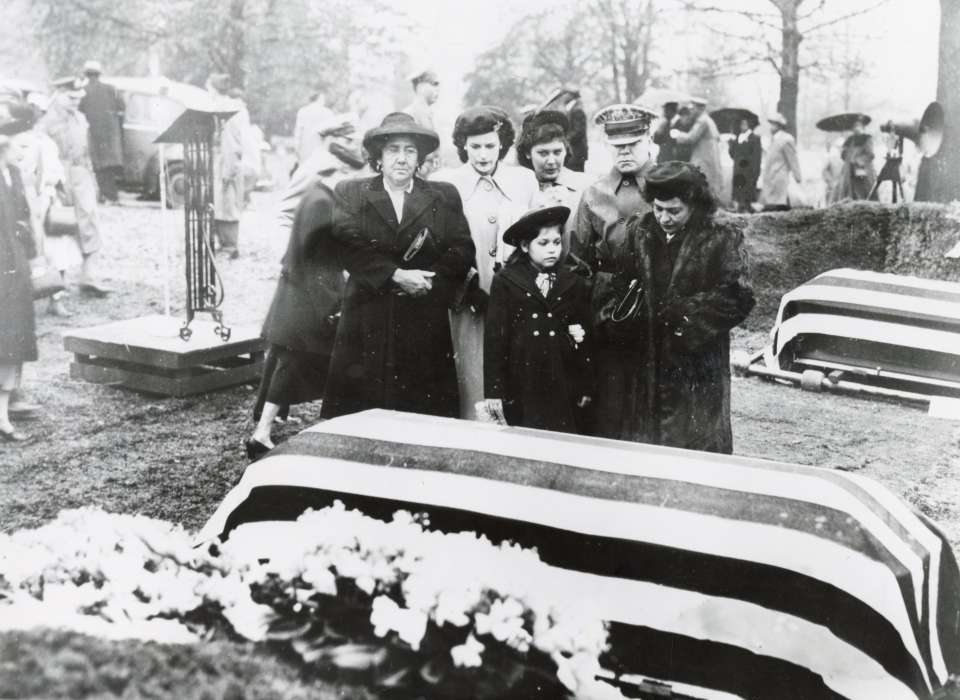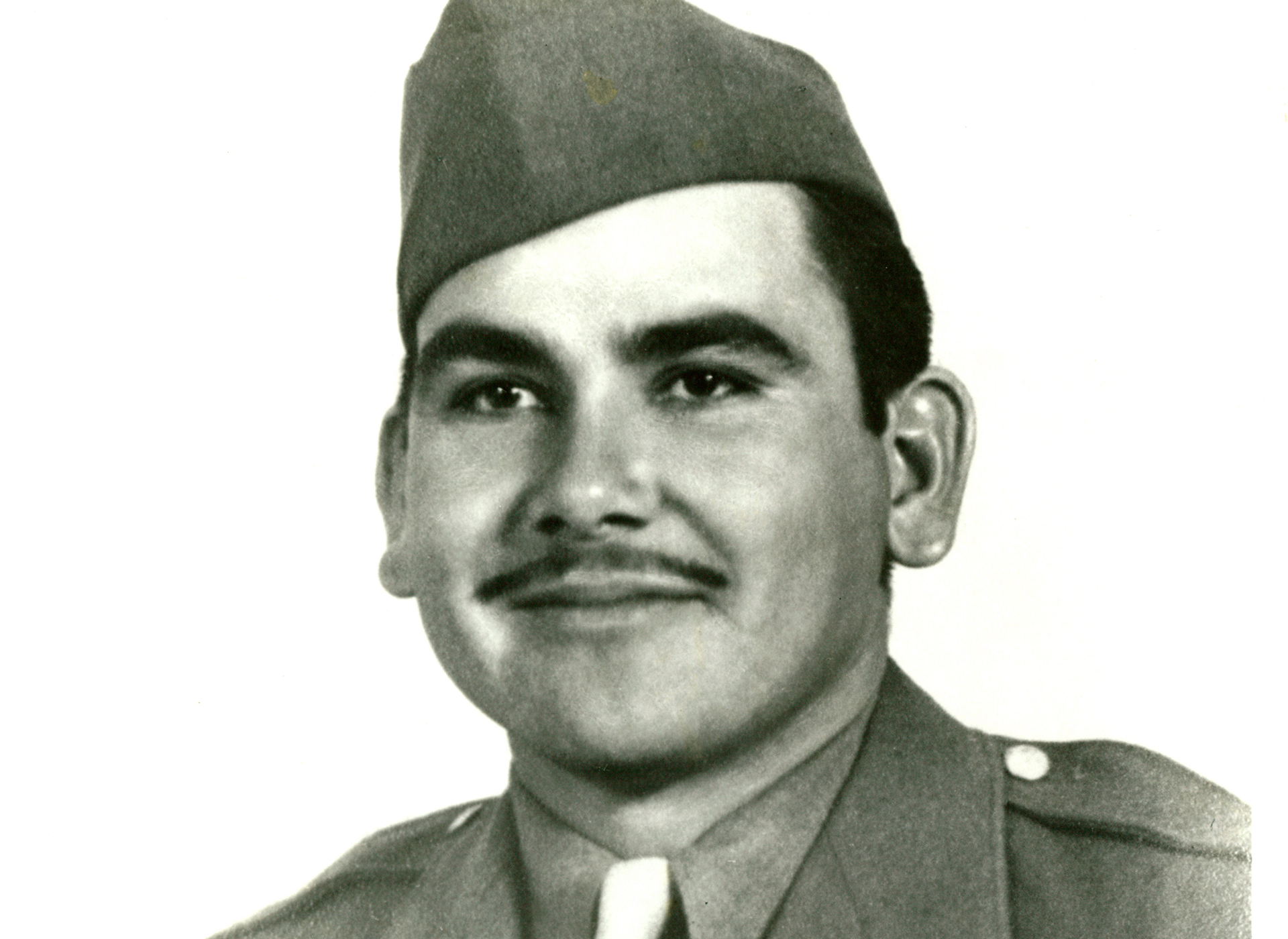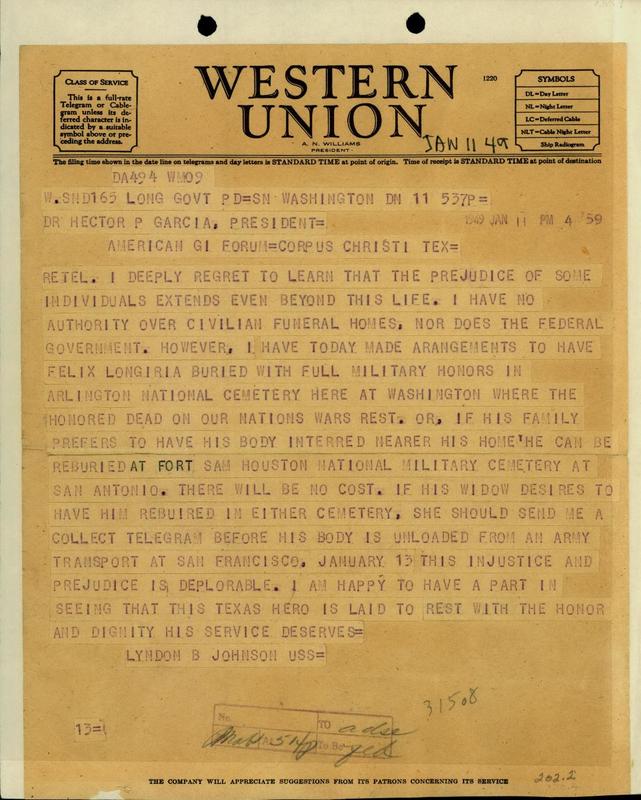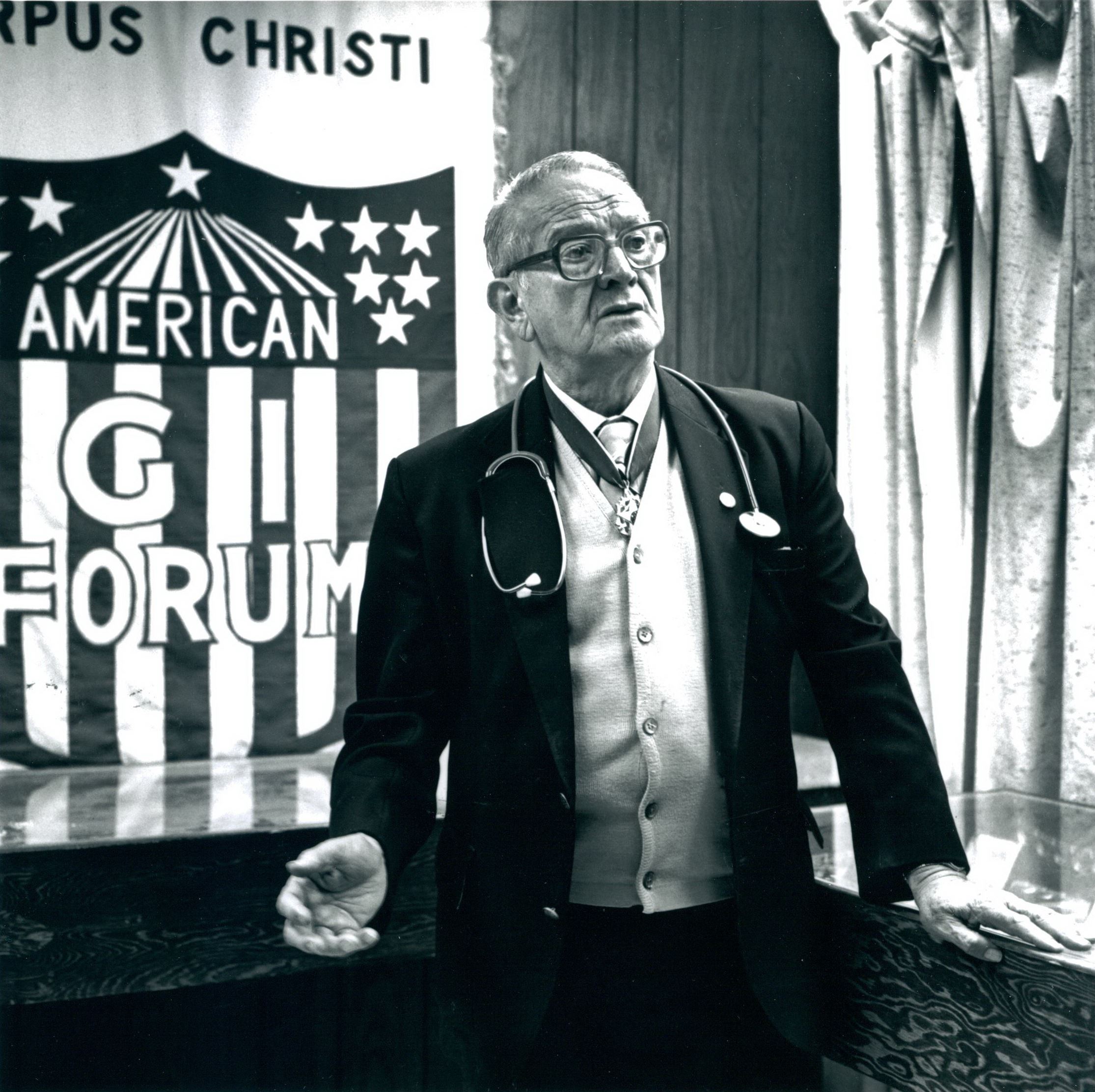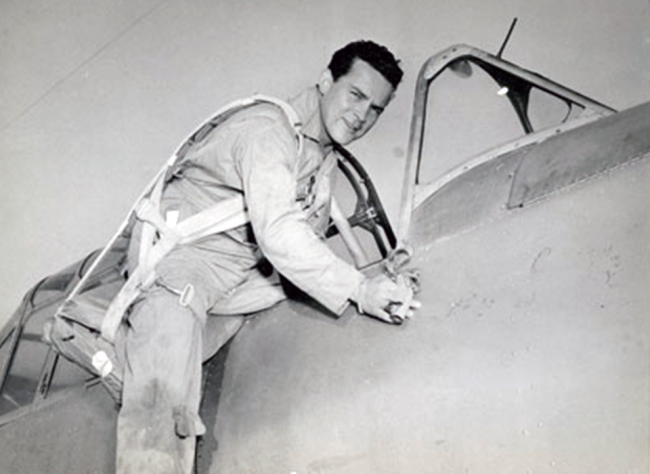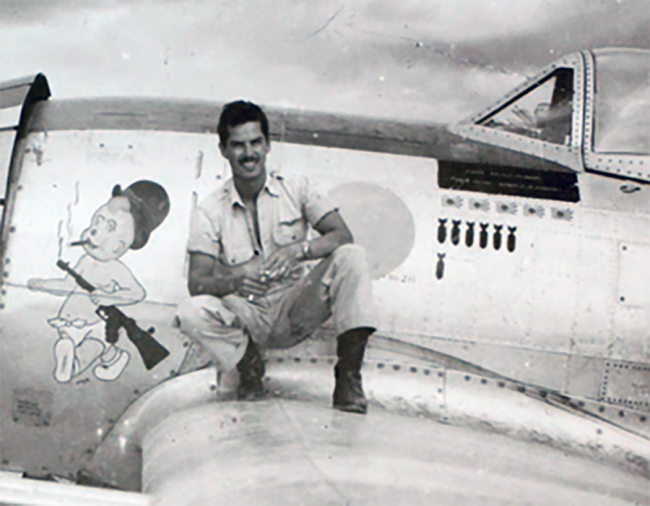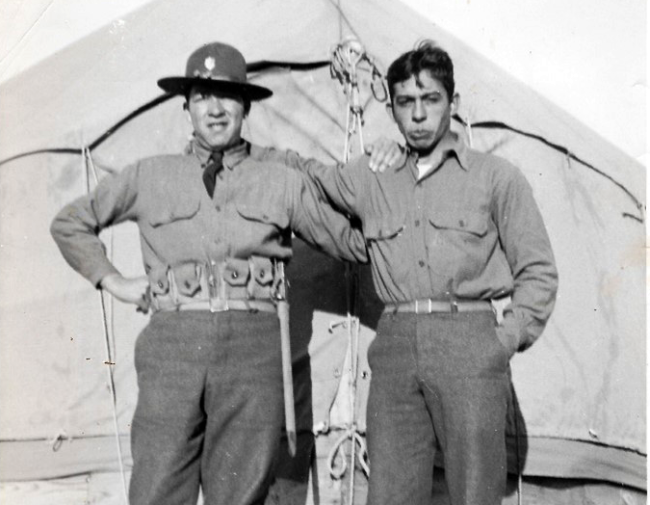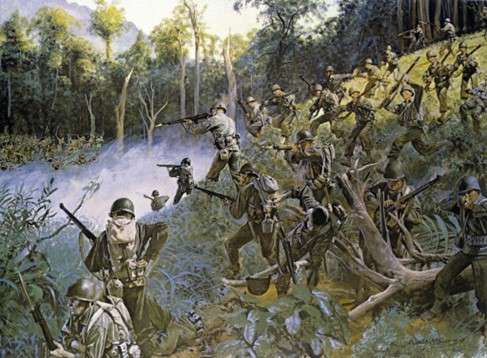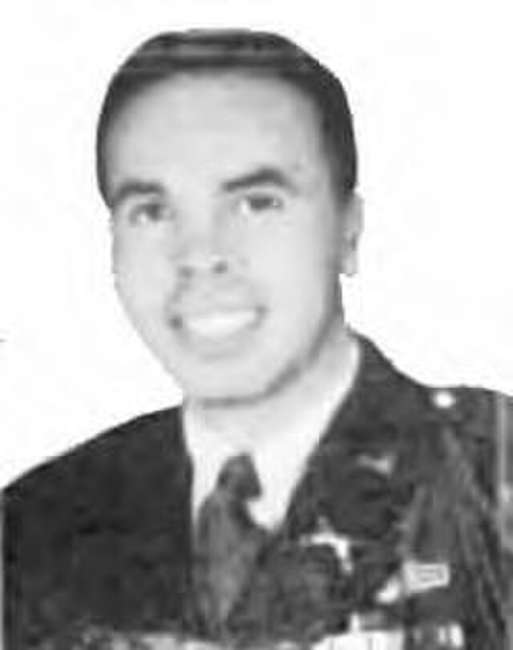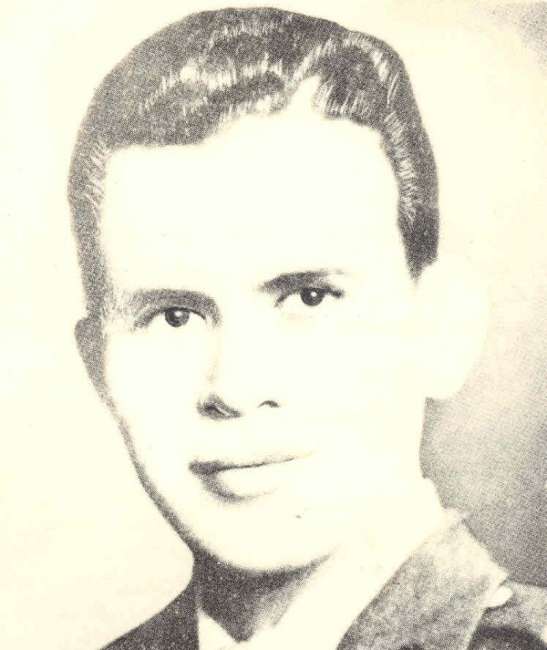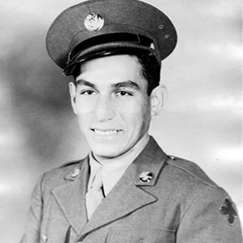Top Photo: The family of Felix Longoria gathers around his casket at Arlington National Cemetery. Courtesy Special Collections and Archives, Mary and Jeff Bell Library, Texas A&M University-Corpus Christi.
Beneath a gray February sky in 1949, Beatrice Longoria stood alongside Texas Senator Lyndon B. Johnson at Arlington National Cemetery. She was there, accompanied by her family, to attend her husband’s second funeral. Private Felix Longoria had died in combat four years earlier and was buried on the distant shores of Luzon in the Philippines. Now, he was the center of a bitter controversy that would help fuel a national civil rights movement.
Felix Zepeda Longoria was born April 16, 1920, in Three Rivers, Texas. When his draft notice arrived in 1944, the 24-year-old delivery driver was married and a father to a young girl. Longoria enlisted in the US Army on November 11, 1944, at Fort Sam Houston, and following his training embarked for the island of Luzon to join the 27th Infantry Regiment. He arrived around June 1, 1945, just months before the end of the war in the Pacific. A few weeks later, on June 16, a Japanese sniper killed Longoria. His body remained on that faraway island until late 1948, when the Army exhumed and transported his remains back to his widow in Texas.
In the mid-20th century, Texas was home to over a million Mexican Americans, nearly half of the national total. Many of their families had resided in the region for centuries, building vibrant cultures and close-knit communities. Yet, despite their enduring presence, Mexican Americans in the Lone Star State faced a stark reality. Although legally classified as white since the Treaty of Guadalupe Hidalgo in 1848, they were rarely afforded the equal treatment that their rights as citizens guaranteed. They faced discriminatory housing and employment practices, suffered political disenfranchisement, and their children attended segregated schools, where educational resources were inferior to those of white students.
In this divided and often contentious landscape, Beatrice Longoria appealed to the director of the sole funeral home in Three Rivers to host a wake in the chapel for her husband. Historically, the chapel only served the town’s white residents, and the funeral home relegated Mexican Americans to burial in a segregated cemetery plot on the far side of a barbed wire fence. So, it is perhaps unsurprising that the funeral director rejected Beatrice’s request with the callous justification that “the whites would not like it.”
In swift response to this overt discrimination, Beatrice’s sister placed a call to Dr. Hector Garcia, a well-known WWII veteran and surgeon in Corpus Christi who had recently founded a civil rights organization known as the American GI Forum. Garcia, eager to champion the rights of a fellow Latino veteran who had given his life in service of the nation, promptly contacted the funeral director. His efforts were met with the same dismissive response and discriminatory rationale.
Garcia refused to let such racism go unchallenged. On January 10, 1949, he convened a meeting of the Corpus Christi Forum, the organization’s inaugural chapter, and sent telegrams to the Texas congressional delegation. A response from Senator Lyndon Johnson arrived the following day. He would be “happy to have a part,” he told Garcia, “in seeing that this Texas hero is laid to rest with the honor and dignity his service deserves.”
Johnson pledged to have Longoria interred at Arlington National Cemetery, a hallowed resting place reserved for the nation’s heroes. With this promise, he helped elevate the controversy of the burial from a local dispute to a nationwide cause célèbre. The Longoria Affair, as it came to be known, drew national attention to the systemic discrimination that Latino Americans faced and served as a rallying point for the American GI Forum’s campaign against pervasive racism and inequality.
On February 16, 1949, a sort of justice prevailed. Private Felix Longoria was laid to rest with full military honors in the nation’s most famous cemetery, fulfilling Senator Johnson’s promise and marking a symbolic turning point in the ongoing battle for civil rights. This episode galvanized Mexican Americans to fight for equal treatment and foreshadowed the senator’s future contributions to civil rights as President of the United States, culminating in the passage of the Civil Rights Act of 1964.
In the aftermath of the funeral, the Texas House of Representatives appointed a committee to investigate allegations of racism in the Longoria Affair. Five committee members convened in the Three Rivers Chamber of Commerce—ironically situated directly next door to a whites-only barbershop—and concluded that there was no discrimination on the funeral director’s part.
The telegram sent from Johnson to Garcia regarding the burial of Private Felix Longoria was a catalyst for change. It validated Garcia’s tireless efforts, illuminated the challenges faced by Mexican American citizens, and positioned the GI Forum to become the leading advocacy organization for Latino veterans.
As an artifact, this piece captures a pivotal moment in the struggle for Latino civil rights and remains a testament to the perseverance of individuals who dare to challenge injustice and inequality head-on. The original telegram will be on display in The National WWII Museum’s Liberation Pavilion from November 3, 2023, until October 15, 2024, courtesy of Special Collections and Archives, Mary and Jeff Bell Library, Texas A&M University-Corpus Christi.
Chase Tomlin
Chase Tomlin is an Associate Curator at The National WWII Museum.
Cite this article:
MLA Citation:
APA Citation:
Chicago Style Citation:
